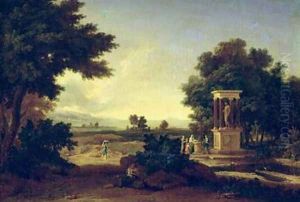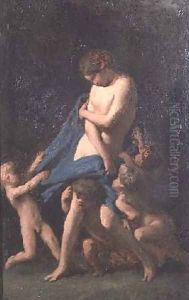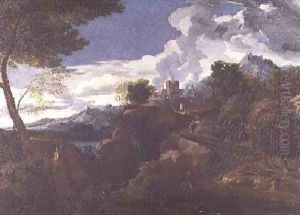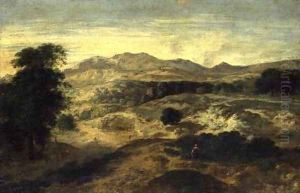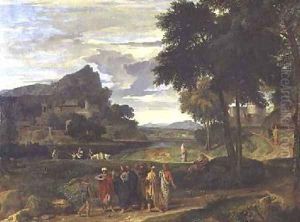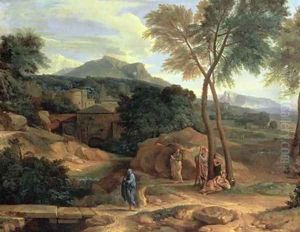Jean Francois I Millet Paintings
Jean-François Millet was born on October 4, 1814, in Gruchy, in Normandy, France. Coming from a family of farmers, Millet's early life was steeped in the rural experiences that would later permeate his most famous works. Despite his humble beginnings, Millet displayed an early talent for art. Encouraged by his family, he initially studied with local painters before moving to Paris in 1837 to further his education at the prestigious École des Beaux-Arts. His early works were influenced by the likes of Nicolas Poussin and Peter Paul Rubens, focusing on classical and mythological themes. However, Millet's true passion lay in depicting the lives and struggles of the peasant class, a theme that would define his career.
Millet's shift towards peasant subjects did not immediately garner acclaim. His painting 'The Winnower' (1848) was met with mixed reviews, but it marked the beginning of his commitment to portraying rural life. The turning point in Millet's career came with 'The Sower' (1850), which, along with 'The Gleaners' (1857) and 'The Angelus' (1859), formed a trilogy of works that cemented his reputation as a pioneer of the Realist movement. These paintings highlighted the dignity and toil of peasant life, diverging from the idealized countryside often depicted in art of the time. Millet's work was characterized by its empathy for the peasant class, capturing their lives with a combination of realism and nobility.
Millet's influence extended beyond his immediate contemporaries. Alongside artists like Gustave Courbet and Honoré Daumier, he was instrumental in the development of Realism in art. His focus on everyday subjects and his empathetic portrayal of the working class opened new avenues in painting, influencing generations of artists, including the Impressionists and later, Vincent van Gogh. Millet's commitment to depicting the reality of rural life, with all its hardships and moments of beauty, challenged the academic norms of his time and marked a significant shift in the portrayal of peasants in art.
Jean-François Millet passed away on January 20, 1875, in Barbizon, France, a village where he had lived and worked since 1849. Part of the Barbizon School, Millet had moved away from Paris to immerse himself further in the rural landscapes that inspired him. His legacy is that of a visionary who transformed the depiction of peasant life in art, emphasizing the dignity and worth of his subjects. Through his work, Millet not only documented the lives of the rural poor but also elevated their daily struggles to a subject worthy of artistic representation. Today, his works are celebrated in museums around the world for their profound humanity and artistic integrity.
